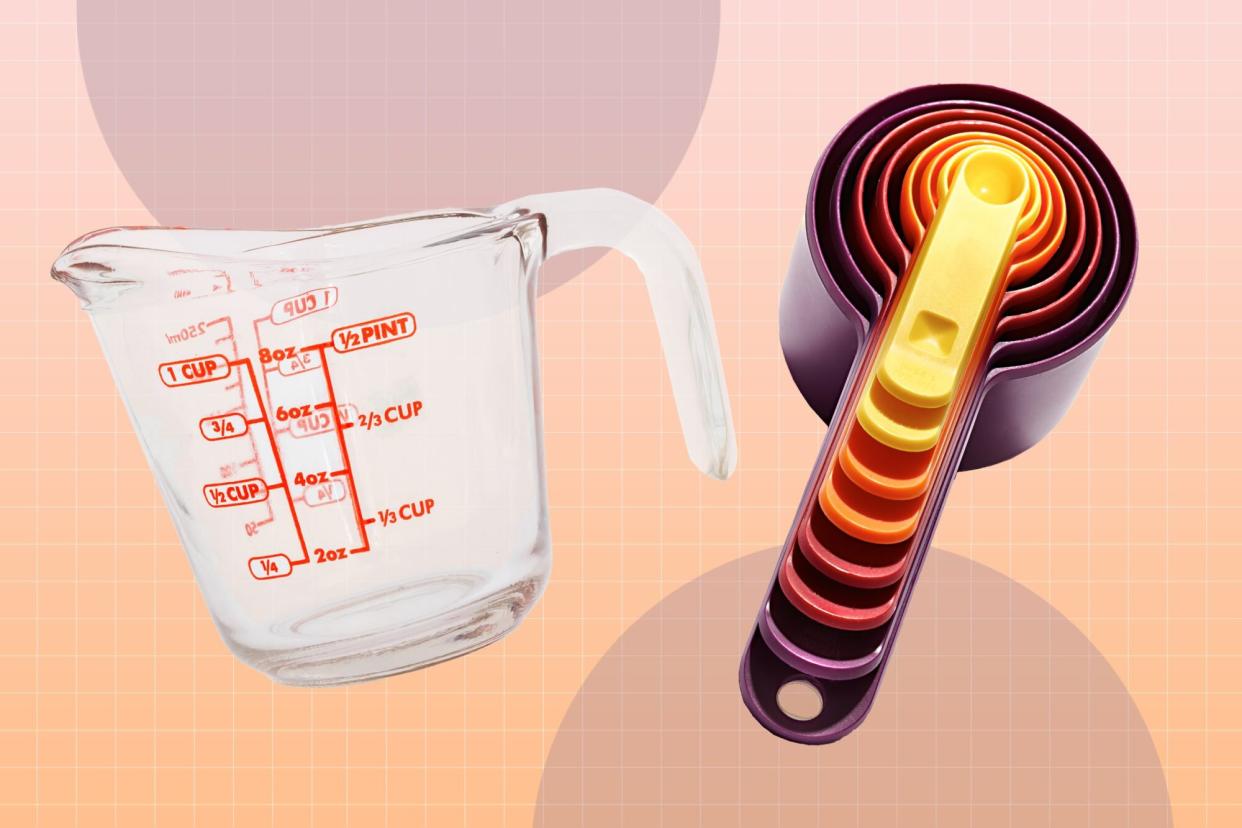Are "Liquid Ounces" the Same as "Ounces"? The Answer Might Make or Break Your Baking Recipes

Getty Images
Take a peek at many of the recipes in the EatingWell archives and you'll likely find mention of "ounces" on the ingredient list. This five-star Cherry-Pineapple Dump Cake recipe, for instance, calls for 16 ounces of cake mix and 20 ounces of crushed pineapple. If those didn't already come in pre-measured cans or boxes, you might think that you'd measure them the same way.
In other words, when you see "ounces" next to flour in a bread recipe or milk in a cake recipe, you may think the same unit of measure applies to both, right?
We wish we could say, "Yes, it's just that easy!" But, "fluid ounces" actually differ from "ounces." The former measures volume while the later measures weight.
Related: 26 Ways to Be a Better Cook
Fluid Ounces vs. Ounces in Recipes
Consider 1 cup of white sugar and 1 cup of milk. Both take up the same amount of space (volume), but they have very different weights. The sugar clocks in at 7.1 ounces, while the milk weighs 8.6 ounces.
Ounces measure weight. The best way to accurately measure ounces is with a kitchen scale. Check out our top Test Kitchen-approved models.
Fluid ounces measure volume (the amount of space something takes up). The best way to measure fluid ounces is with a glass measuring cup with tick marks noting the volume along the side. (Psst…use a pro tip from our guide on how to measure ingredients. Make sure you eyeball the level with the cup positioned on a flat surface, such as a counter.)
In case you need a refresher, here's a quick guide with common liquid measures and their equivalents in fluid ounces:
1 tablespoon = ½ fluid ounce
1 cup = 8 fluid ounces
1 pint = 16 fluid ounces
1 quart = 32 fluid ounces
1 gallon = 128 fluid ounces
Using a scale is the most exacting way to measure weight for dry ingredients. To clear up any confusion, here are a couple examples with conversions. One cup of all-purpose flour weighs 4 ½ ounces, not 8 ounces, while 1 cup of chocolate chips weighs 6 ounces. Our baking recipes often call for cup equivalent measurements for ease, so use our level-and-spoon strategy for a fairly accurate weight per cup for items like flour and sugar. But if you come across a recipe that calls for ounces of a dry ingredient, your most accurate option is to dial things in with a kitchen scale. (It's so worth the $30-ish investment!)
Water (and similar liquids that are mostly water like milk and strained fruit juices) has the exact same volume measure as weight: 8 fluid ounces (volume) of water weighs 8 ounces.
Related: Baking Substitutions You Probably Already Have in Your Kitchen
The Bottom Line
Unless you're measuring water, do not use liquid measuring cups and dry measuring cups interchangeably, and try to keep the difference between fluid ounces (volume) and ounces (weight) top of mind the next time you preheat your oven.
While it might seem like a minor difference, using the right type of measuring vessel (and weight or volume of ingredient) can be the difference between a Paul Hollywood handshake-worthy bake and a Nailed It!-style baking fail.

